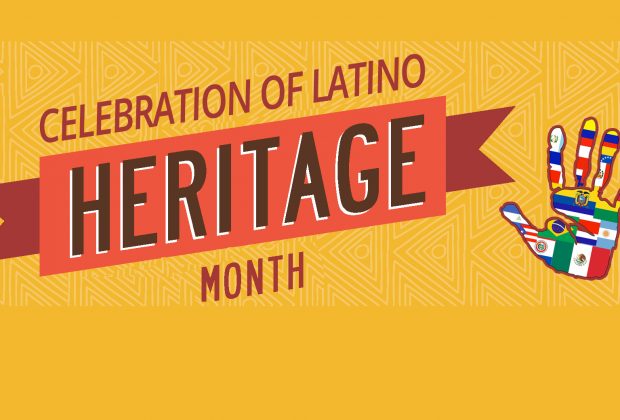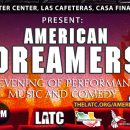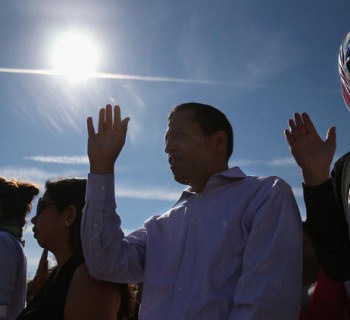United States Bureau of the Census, Release Number: CB17-FF.17 ~ August 31, 2017
In September 1968, Congress authorized President Lyndon B. Johnson to proclaim National Hispanic Heritage Week, observed during the week that included Sept. 15 and Sept. 16. In 1989, Congress expanded the observance to a month long celebration (Sept. 15-Oct. 15) of the culture and traditions of those who trace their roots to Spain, Mexico and the Spanish-speaking nations of Central America, South America and the Caribbean.
Sept. 15 is the starting point for the celebration because it is the anniversary of independence of five Latin American countries: Costa Rica, El Salvador, Guatemala, Honduras and Nicaragua. In addition, Mexico and Chile celebrate their independence days on Sept. 16 and Sept. 18, respectively.
Population
57.5 million
The Hispanic population of the United States as of July 1, 2016, making people of Hispanic origin the nation's largest ethnic or racial minority. Hispanics constituted 17.8 percent of the nation's total population.
Source: Vintage 2016 Population Estimates
1,131,766
The number of Hispanics added to the nation's population between July 1, 2015, and July 1, 2016. This number is more than half of the approximately 2.2 million people added to the nation's total population during this period.
Source: Vintage 2016 Population Estimates
2.0%
The percentage increase in the Hispanic population between 2015 and 2016.
Source: Vintage 2016 Population Estimates
119 million
The projected Hispanic population of the United States in 2060. According to this projection, the Hispanic population will constitute 28.6 percent of the nation's population by that date.
Source: 2014 National Population Projections, Table 10
63.4%
The percentage of those of Hispanic or Latino origin in the United States who were of Mexican origin in 2015. Another 9.5 percent were Puerto Rican, 3.8 percent Salvadoran, 3.7 percent Cuban, 3.3 percent Dominican and 2.4 percent Guatemalan. The remainder were of some other Central American, South American, or other Hispanic or Latino origin.
Source:
2015 American Community Survey, Table B03001
States and Counties
10.9 million
The estimated population for those of Hispanic origin in Texas as of July 1, 2016.
Source: Vintage 2016 Population Estimates
9
The number of states with a population of 1 million or more Hispanic residents in 2016 - Arizona, California, Colorado, Florida, Illinois, New Jersey, New Mexico, New York and Texas.
Source: Vintage 2016 Population Estimates
54.4%
The number of states with a population of 1 million or more Hispanic residents in 2016 - Arizona, California, Colorado, Florida, Illinois, New Jersey, New Mexico, New York and Texas.
Source:
Vintage 2016 Population Estimates
15.3 million
The Hispanic population of California. This was the largest Hispanic population of any state in 2016.
Source: Vintage 2016 Population Estimates
4.9 million
The Hispanic population of Los Angeles County. This was the largest Hispanic population of any county in 2016.
Source: Vintage 2016 Population Estimates
39,600
Harris County in Texas had the largest numeric increase of Hispanics from 2015 to 2016.
Source: Vintage 2016 Population Estimates
Families and Children
16.7 million
The number of Hispanic households in the United States in 2016.
Source: Families and Living Arrangements, Households, Table H-3
48.0%
The percentage of Hispanic households that were married-couple households in 2016. Among all households in the United States, 47.9 percent were married-couple households.
Source: Families and Living Arrangements, Households, Table H-3
57.5%
The percentage of Hispanic married-couple households that had children younger than age 18 present in 2016, whereas for all married-couple households it was 39.5 percent.
Source: Families and Living Arrangements, Households Table H-3
67.2%
The percentage of Hispanic children that lived with two parents in 2016, whereas for all children it was 68.7 percent.
Source: Historical Living Arrangements of Children, Table CH-1 and Table CH-4
Spanish Language
40 million
The number of U.S. residents age 5 and older who spoke Spanish at home in 2015. This is a 130.9 percent increase since 1990 when it was 17.3 million. Those who hablan español en casa constituted 13.3 percent of U.S. residents age 5 and older. More than half (59 percent of all Spanish speakers and 57.4 percent of Hispanic Spanish speakers) spoke English "very well."
Source:
- 1990 Decennial Census
- 2015 American Community Survey, Table DP02
- Language Spoken at Home by Ability to Speak English for the Population 5 Years and Over (Hispanic or Latino), 2015 American Community Survey, Table B16006
- Language Spoken at Home, 2015 American Community Survey, Table S1601
72.9%
The percentage of Hispanics age 5 and older who spoke Spanish at home in 2015.
Source: 2015 American Community Survey, Table B16006
Income, Poverty and Health Insurance
$45,150
The median income of Hispanic households in 2015.
Source: Income and Poverty in the United States: 2015, Table 1
21.4%
The poverty rate among Hispanics in 2015.
Source: Income and Poverty in the United States: 2015, Table 3
16.2%
The percentage of Hispanics who lacked health insurance in 2015.
Source: Health Insurance Coverage in the United States: 2015, Table 5
Education
66.0%
The percentage of Hispanics age 25 and older that had at least a high school education in 2015.
Source: 2015 American Community Survey, Table B15002I
14.8%
The percentage of the Hispanic population age 25 and older with a bachelor's degree or higher in 2015.
Source: 2015 American Community Survey, Table B15002I
4.7 million
The number of Hispanics age 25 and older who had at least a bachelor's degree in 2015.
Source:
2015 American Community Survey, Table B15002I
1.5 million
The number of Hispanics age 25 and older with advanced degrees in 2015 (e.g., master's, professional, doctorate).
Source: 2015 American Community Survey, Table B15002I
17.0%
The percentage of students (both undergraduate and graduate) enrolled in college in 2015 who were Hispanic.
Source:
2015 American Community Survey, Tables B14007I and B14007
24.3%
The percentage of elementary and high school students that were Hispanic in 2015.
Source: 2015 American Community Survey, Tables B14007I and B14007
Foreign Born
34.5%
The percentage of the Hispanic population that was foreign born in 2015.
Source: 2015 American Community Survey, Table B05003I
64.3%
The percentage of the 10.3 million noncitizens under the age of 35 who were born in Latin America and the Caribbean and were living in the United States in 2010-2012.
Source: Noncitizens Under Age 35: 2010-2012, American Community Survey Brief
Jobs
67.0%
The percentage of Hispanics or Latinos age 16 and older who were in the civilian labor force in 2015.
Source: 2015 American Community Survey, Table S2301
20.5%
The percentage of civilian employed Hispanics or Latinos age 16 and older who worked in management, business, science and arts occupations in 2015.
Source: 2015 American Community Survey, Table B24010I
Voting
9.2%
The percentage of voters in the 2016 presidential election who were Hispanic. Hispanics comprised 4.7 percent of voters in 1996.
Source:
- Reported Voting and Registration, by Race, Hispanic Origin, Sex, and Age, for the United States: November 2016, Table 2
- The Diversifying Electorate-Voting Rates by Race and Hispanic Origin in 2012 (and Other Recent Elections), Population Characteristics, Table 3
7.3%
The percentage of voters in the 2014 congressional election who were Hispanic.
Serving our Country
1.2 million
The number of Hispanics or Latinos age 18 and older who are veterans of the U.S. armed forces.
Source: 2015 American Community Survey, Table B21001I
Business
312,738
The estimated number of Hispanic-owned employer firms nationally in 2015, up from 298,563 or 4.7 percent from 2014.
Source: 2015 Annual Survey of Entrepreneurs
$61.2 billion
The estimated sales/receipts reported by Hispanic employer firms owned by women in 2015. Male-owned Hispanic employer firms reported sales of $264.2 billion.
Source: 2015 Annual Survey of Entrepreneurs
Publication source: United States Census Bureau
The NiLP Report on Latino Policy & Politics is an online information service provided by the National Institute for Latino Policy. For further information, visit www.latinopolicy. org. Send comments to editor@latinopolicy.org.







